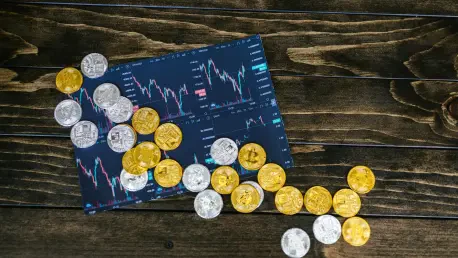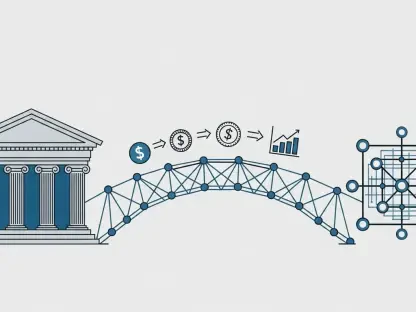Welcome to an exciting deep dive into the world of tokenized securities and blockchain innovation. Today, we’re speaking with a leading expert in fintech, whose extensive knowledge covers everything from blockchain and cryptocurrency to regulation and policy. With a passion for transforming financial markets, our guest is at the forefront of the tokenization revolution, offering unique insights into how technology is reshaping the way we trade and invest in equities. In this interview, we’ll explore the groundbreaking developments in tokenized securities, the strategic decisions behind building proprietary blockchain infrastructure, and the vision for unifying global markets through cutting-edge technology.
Can you start by telling us about the mission behind tokenizing equities and how your work is contributing to this emerging field?
Absolutely. Tokenizing equities is about bringing traditional stock markets onto blockchain rails, which offers incredible benefits like 24/7 trading, faster settlements, and lower costs. My work focuses on creating infrastructure that makes this transition seamless and compliant with regulations. We’re building solutions that allow investors worldwide to access U.S. public stocks in a tokenized form, breaking down barriers and democratizing access to these markets. It’s about reimagining how financial assets are traded and settled in a digital age.
What inspired the creation of a dedicated blockchain for tokenized securities, and how does it address the limitations of existing public blockchains?
The inspiration came from necessity. Public blockchains, while powerful, often lack the specific compliance mechanisms needed for securities trading. Issues like regulatory alignment, uptime reliability, and integration with traditional finance systems are hard to manage on shared networks. By developing our own blockchain, we can tailor it to meet stringent legal requirements, ensure consistent performance, and create bridges to legacy systems. This allows us to offer a more controlled and secure environment for tokenized equities, which is critical for gaining trust from both regulators and investors.
How does your blockchain serve as a coordination and settlement layer for tokenized equities across multiple networks?
Our blockchain acts as a central hub that connects various networks where tokenized equities are issued, such as Arbitrum, Base, and Solana. It facilitates clearing and settlement by ensuring that trades executed on different chains can be reconciled in one unified system. This prevents the fragmentation of liquidity—a huge issue in a market as massive as the $100 trillion stock market. By pulling liquidity together, we enable smoother trading experiences and ensure that investors aren’t stuck with illiquid assets just because they’re on a particular chain.
Can you elaborate on the vision of becoming a neutral clearinghouse for tokenized stocks and why this role is so pivotal for the industry?
The idea is to position our network as a trusted intermediary, much like the Depository Trust and Clearing Corporation (DTCC) is for traditional U.S. stock markets. This means providing a neutral platform where clearing and settlement happen transparently and efficiently for all participants. It’s pivotal because tokenization is still a fragmented space—different platforms and chains have their own rules and systems. A neutral clearinghouse brings standardization, reduces counterparty risk, and builds confidence in tokenized assets, which is essential for mainstream adoption.
What were the key factors in choosing the technology stack for building this blockchain, and how does it support your goals?
We prioritized flexibility and cost control when selecting our tech stack. The technology we chose allows us to customize the blockchain to our specific needs, especially in terms of compliance and scalability. One major advantage is the ability to manage transaction fees, or gas prices, which can be unpredictable on other solutions like rollups or layer-2 networks. Keeping fees predictable and low is crucial for making tokenized trading accessible to a broader audience, and this tech gives us the tools to achieve that while maintaining high performance.
With the test net already live, can you share some early feedback or insights, and what’s the roadmap for the public launch?
The test net phase has been incredibly insightful. We’ve been able to stress-test the system, identify bottlenecks, and refine our approach to settlement and coordination across chains. Early feedback from partners has been positive, especially around the stability and compliance features. As for the roadmap, we’re on track for a public launch in the coming weeks. Our focus right now is ensuring everything is robust and user-ready, so when we go live, the experience for traders and institutions is seamless.
How do institutional partners contribute to the governance and operation of your network, and what value do they add?
Our institutional partners play a critical role in the initial governance of the network. They act as validators, helping to secure the chain and ensure transactions are processed correctly. Beyond that, they provide custody services, which are vital for safeguarding assets in a regulated environment. Their involvement adds credibility and expertise—each partner brings deep experience in finance and blockchain, helping us align with best practices and regulatory expectations while fostering trust among users.
Looking ahead, how do you envision the process of decentralizing your blockchain, and what might that mean for the future of the network?
Decentralization is a key long-term goal for us. The process will likely involve gradually expanding the network of validators and reducing centralized control over time. We’re exploring mechanisms to ensure that governance becomes community-driven while maintaining the compliance standards necessary for securities. This could include introducing a governance token to incentivize participation and give stakeholders a say in the network’s evolution. Ultimately, decentralization will make the system more resilient and inclusive, aligning with the ethos of blockchain technology.
What is your forecast for the future of tokenized equities and their impact on global financial markets?
I’m incredibly optimistic about tokenized equities. In the next five to ten years, I believe we’ll see a significant portion of global stock trading move to blockchain-based systems. The benefits—faster settlements, reduced costs, and access to markets anytime, anywhere—are just too compelling to ignore. We’re likely to see more traditional financial institutions adopting tokenization, alongside growing regulatory clarity that will pave the way for mass adoption. The impact could be transformative, making markets more efficient and accessible, especially for underserved regions and retail investors.









